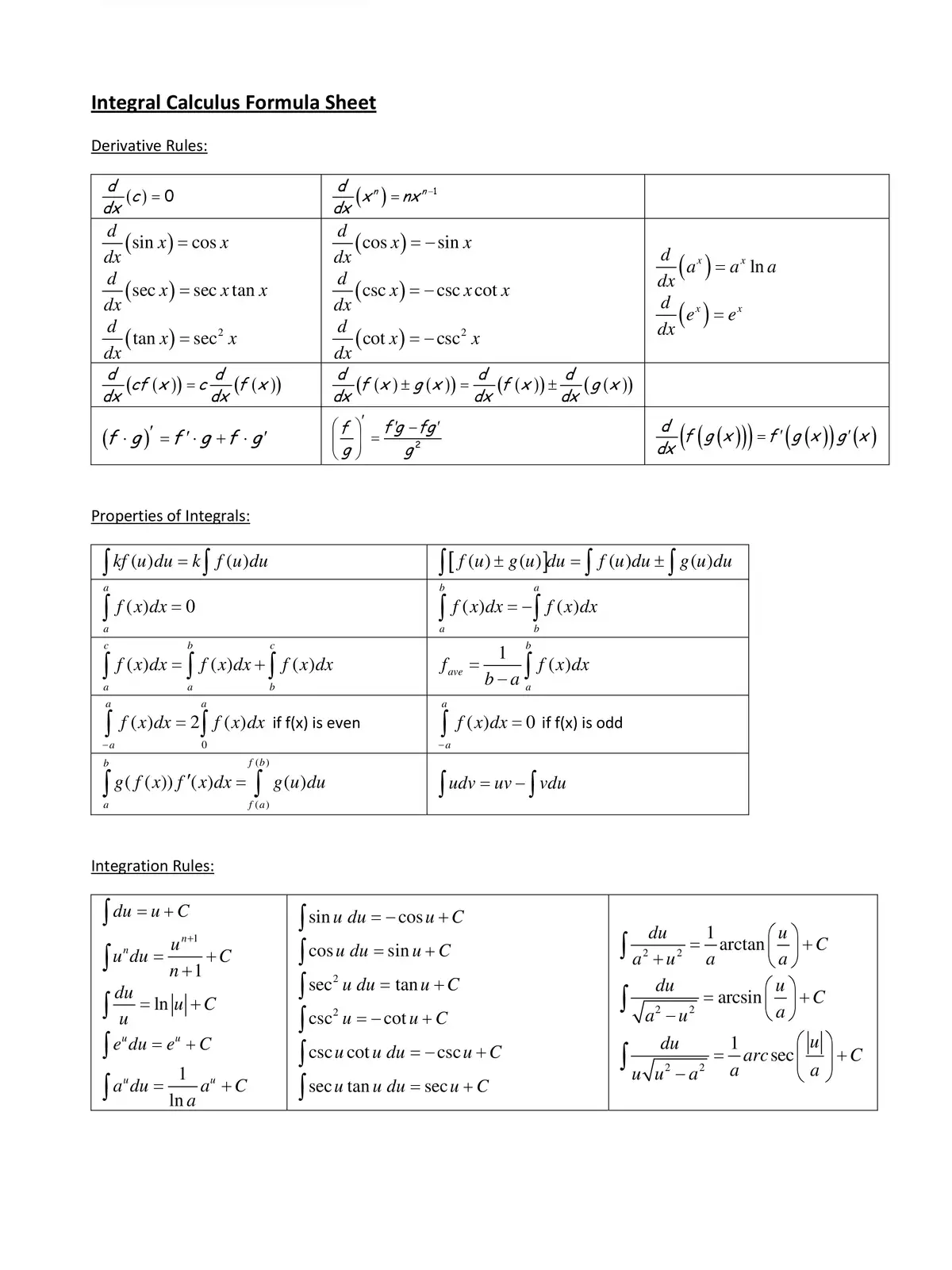Integration Formulas - Summary
Integration is a fundamental concept in mathematics that can be described as the reverse process of differentiation, or what we may refer to as Inverse Differentiation. Basically, integration involves finding a function whose derivative is known. This important process is not only essential for understanding calculus but also plays a crucial role in various real-life applications, such as determining areas of two-dimensional shapes and calculating the volumes of three-dimensional objects.
Integral Formulas
Here’s a list of some basic integral formulas that you should know:
- ∫ 1 dx = x + C
- ∫ a dx = ax + C
- ∫ xn dx = ((xn+1) / (n+1)) + C ; n ≠ 1
- ∫ sin x dx = – cos x + C
- ∫ cos x dx = sin x + C
- ∫ sec2 x dx = tan x + C
- ∫ csc2 x dx = -cot x + C
- ∫ sec x (tan x) dx = sec x + C
- ∫ csc x (cot x) dx = -csc x + C
- ∫ (1/x) dx = ln |x| + C
- ∫ ex dx = ex + C
- ∫ ax dx = (ax/ln a) + C ; a > 0, a ≠ 1
Classification of Integral Formulas
We can classify integral formulas based on different types of functions, which include:
- Rational functions
- Irrational functions
- Trigonometric functions
- Inverse trigonometric functions
- Hyperbolic functions
- Inverse hyperbolic functions
- Exponential functions
- Logarithmic functions
- Gaussian functions
For a comprehensive understanding, download the Integration Formulas PDF using the link given below.
